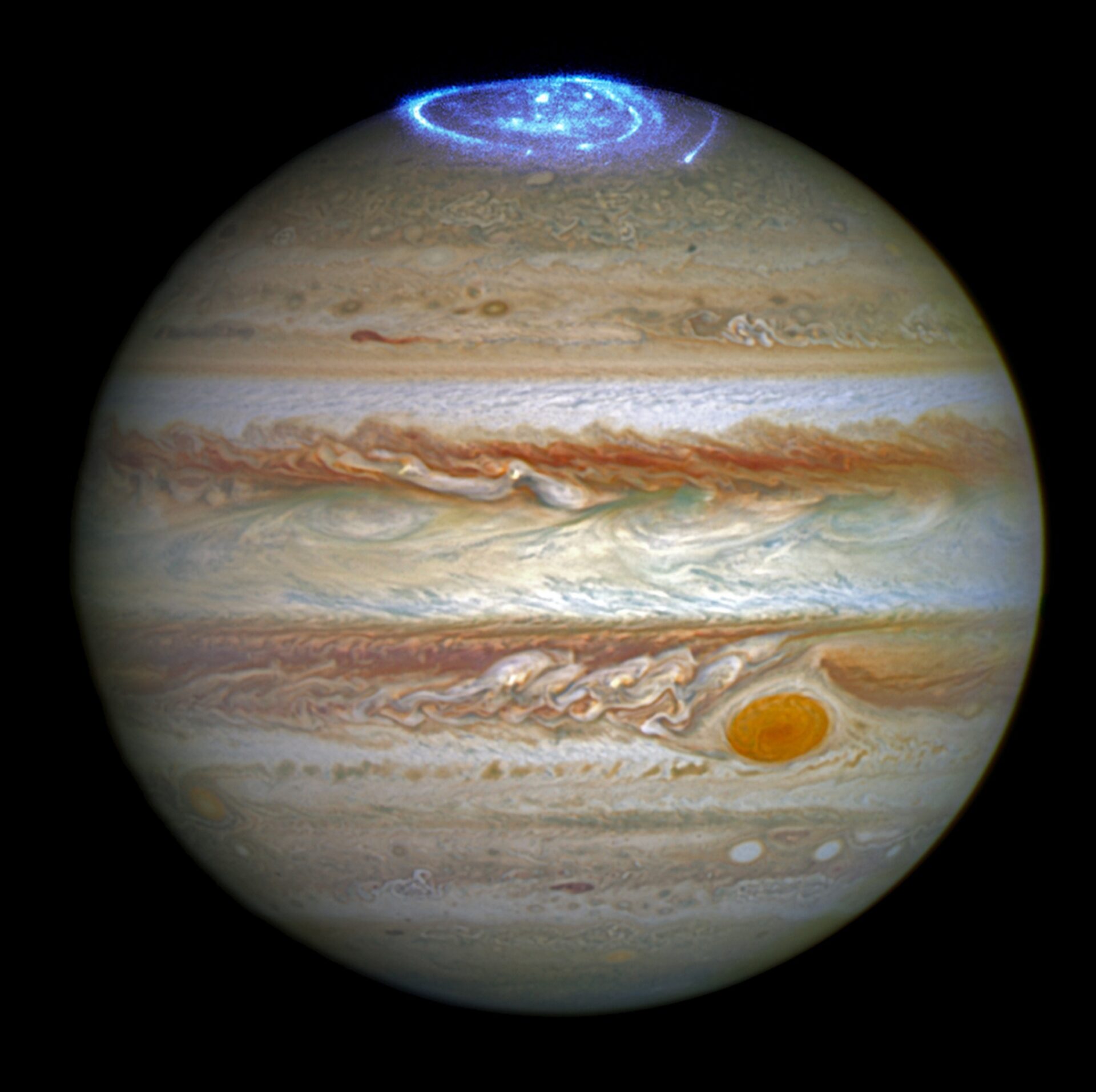Jupiter is a gas giant that could even shine like a star if it were a little bigger. Because Jupiter is not heated by nuclear fusion. It heats up under its weight, compressing the interior through hydrostatic equilibrium, but the surface is heated mainly by the Sun. Since Jupiter receives only about 4% of the light per square meter from Earth, we can expect that its upper atmosphere will be quite cold. According to traditional models, its temperature should be about -70 °C. But recent measurements show that this is a fairly hot world: the mark in the upper atmosphere exceeds 400 °C, and in the polar regions — up to 700 °C.

But how is it possible, if Jupiter is far from the Sun, to heat up so much? A team of scientists from the UK, USA and Japan find that this is due to the aurora borealis of the planet. On Earth, the aurora borealis, better known as the Northern Lights, occurs when solar wind ions collide with the planet’s magnetic field and crash into our atmosphere at high speed, illuminating it. Jupiter’s magnetic field is much stronger than Earth’s, so it is more intense. Moreover, so much so that it can heat the upper layers of the atmosphere.
The team showed that the heating of the polar regions of Jupiter coincides with the cycle of activity of the auroras of the giant planet. Scientists have also investigated how heat gradually spreads, warming up the atmosphere on its way to the equator. Interestingly, this kind of strong electromagnetic heating is similar to what is happening with the upper layers of the Sun’s atmosphere.

It turns out that electromagnetism can hold a lot of energy. This discovery is proven by the example of the Sun, where the surface temperature is almost 5500 °C, but observations have shown that its most diffuse upper layer, known as the corona, has a temperature of up to a million degrees Celsius. Until recently, this was a mystery, until scientists found out that solar flares and the restructuring of the Sun’s magnetic field heat up the corona.
Because Jupiter’s upper atmosphere is so hot, this may help explain long-term weather conditions in the cloud region. Similar temperature fluctuations in the atmosphere of Jupiter can lead to large storms that we observe, for example, the famous Great Red Spot.
Earlier we reported on how the clouds of Jupiter were reproduced in an amazing 3D animation.
According to Astronomic Journal
Follow us on Twitter to get the most interesting space news in time
https://twitter.com/ust_magazine

